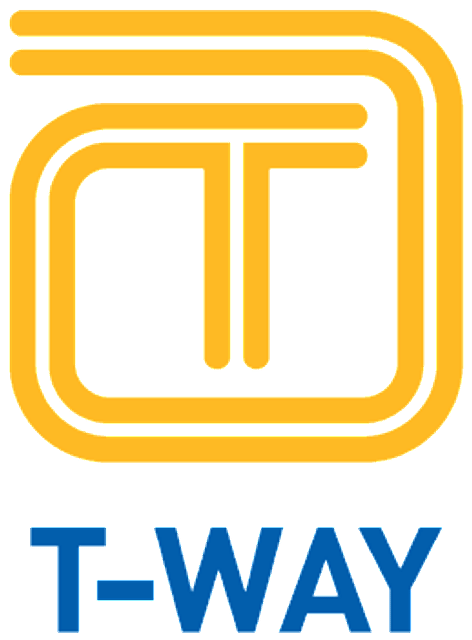Liverpool–Parramatta T-way

Liverpool–Parramatta T-way

| Liverpool–Parramatta T-way | |
|---|---|
| Overview | |
| Operator | Transit Systems |
| Began service | February 2003 (2003-02) |
| Route | |
| Start | Liverpool station |
| Via | Bonnyrigg |
| End | Parramatta station |
| Length | 31 km (19.3 mi) |
The Liverpool–Parramatta T-way is a continuous series of bus-only lanes and bus roadways between Parramatta and Liverpool in Western Sydney. Completed in February 2003, the 31 km (19.3 mi) T-way was the first bus rapid transit infrastructure to be built in Sydney.[1]
| Liverpool–Parramatta T-way | |
|---|---|
| Overview | |
| Operator | Transit Systems |
| Began service | February 2003 (2003-02) |
| Route | |
| Start | Liverpool station |
| Via | Bonnyrigg |
| End | Parramatta station |
| Length | 31 km (19.3 mi) |
Design and construction
A project of the then New South Wales Ministry of Transport and the Roads & Traffic Authority, the T-way cost $346 million to build.[2]
The route runs through the central business district of Parramatta, before heading onto the Great Western Highway to South Wentworthville, after which it heads onto its own alignment next to the Sydney Water pipeline that runs from Prospect Reservoir. It then proceeds on its own alignment in an old freeway reservation through to Hoxton Park. At Brickmakers' Creek in Liverpool it heads onto its own alignment to the centre of Liverpool and the railway station bus interchange. The system includes active traffic signal priority to give buses preference where the route crosses other roadways.[3]
Stations
The Liverpool–Parramatta T-way has 35 stations, spaced approximately every 800 metres. These stations are more substantial than conventional bus stops, which has led to criticism that the system is overly costly and vulnerable to vandalism. Stations feature closed circuit television, real-time information screens, emergency help points, audio announcements and extensive landscaping.[4]
One station, Parramatta Station, also forms part of the North-West T-way. The other stations are, from Parramatta:
Pitt, near Pitt Street, Parramatta
Mays Hill
Coleman, near Coleman Street, South Wentworthville
Finlayson, near Finlaysons Creek, South Wentworthville
Centenary, on Centenary Road, South Wentworthville
Sherwood, on Sherwood Road, Merrylands West
Canal, near a Sydney Water canal, Merrylands West
Woodpark
Warren, near Warren Road, Smithfield
Smithfield
Cooper, near Cooper Street, Smithfield
Gipps, near Gipps Road, Smithfield
Hassall, near Hassall Street, Wetherill Park
Wetherill Park
Elizabeth, near Elizabeth Street, Wetherill Park
Victoria, on Victoria Street, Wetherill Park
Horsley, near The Horsley Drive, Wetherill Park
Prairiewood
Orphan School, near Orphan School Creek, Bossley Park
St Johns Park
Clear Paddock, near Clear Paddock Creek, Greenfield Park
Bonnyrigg
Brown, near Brown Road, Bonnyrigg Heights
Green Valley
Busby
Cartwright, near Cartwright Avenue, Hinchinbrook
Hinchinbrook
Miller
Ash, near Ash Road, Cartwright
Maxwells, near Maxwells Creek, Liverpool
Brickmakers, near Brickmakers Creek, Liverpool
Memorial, near Memorial Avenue, Liverpool
Macquarie, near Macquarie Street, Liverpool
Liverpool, at Liverpool Station.
Services
There are a number of services using portions of the T-way. The only service to have the prefix T is T80, which runs along the whole stretch of the T-way. In the financial year ended June 2012, 2.77 million passengers used the T-way services.[5]
Provision of the service T80 was put out to tender and an eight-year contract awarded to Western Sydney Buses.[2] Services were initially provided by 17 natural-gas Mercedes-Benz O405NH buses in blue and yellow T-way livery. These were replaced in 2004 by diesel Volvo B12BLEs.
Since October 2013 services have been operated by Transit Systems Sydney as part of its Sydney Bus Region 3 contract.[5] All State Transit bus fleet used for the T-way were transferred to Transit Systems Sydney. The liveries of these buses still show the colours of State Transit, blue and white, with some now in the Transport NSW livery. Buses inherited from State Transit had on-board audio announcements and green automatic validating machines which have since been replaced by Opal validators like other buses.
T80 was the first Rapid bus route in Sydney.[1]